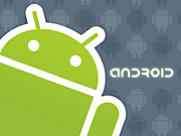When asked more pointedly, “So when you go from exclusive to multiple, you don’t change the charge to the carrier?” Cook answered, “Correct.”
Apple has more pricing power than the Don.
When asked more pointedly, “So when you go from exclusive to multiple, you don’t change the charge to the carrier?” Cook answered, “Correct.”
Apple has more pricing power than the Don.
Peter Oppenheimer, Apple’s Chief Financial Officer, said that the Average Selling Price of iPhones in the quarter “was just over $600. This reflects both high mix of 3GS sellthrough and benefits of rebalancing the ending channel inventory toward the 3GS.”
An astonishing admission from Apple who has never revealed their iPhone ASP. Previous analyst estimates had the iPhone ASP at $550. If this is true, then Apple has violated one of the cardinal mobile industry rules: “Thy ASP shall always erode”. Given what is known about the components, iPhone gross margin is likely to be above 50%. The gross margin, or what you are able to capture in value above the bill of materials, isthe primary indicator of value creation in the device business. Apple’s number is astronomical vis-a-vis the competition. Stay tuned as this gets scrutiny.
 When thinking about the number of devices shipping out of Apple, and the relative value of those units compared to the competition you have to always think of the platform.
When thinking about the number of devices shipping out of Apple, and the relative value of those units compared to the competition you have to always think of the platform.
The market leader Nokia claimed to have sold 16+ million smartphones in the quarter. When comparing platforms, to whatever Apple ships in iPhones you have to add the iPod touch units. I see that number being about half of the iPhone numbers or about 4 million. Let’s say 10 to 12 million as a range for the platform. Already this is within striking range of Nokia.
It may sound that Apple has some catching up to do, however the important thing is that most of the Nokia devices are not uniformly addressable by developers because they are different platforms and the Symbian platform itself will be broken next year as it has been broken many times before. This is also true for Blackberry and Windows Mobile and will become true for Android as vendors fork and splinter the code to differentiate.
This already puts Apple in the pole position today in terms of contiguous addressable units volumes.
I cannot over-emphasize the importance of this platform effect. It’s what made Windows dominant and it should be the most important issue in the planning of new mobile products, but it clearly isn’t for Apple’s competitors. Either product planners are ignorant of history or completely hamstrung by other constraints on their businesses (I expect the latter).
As a result it’s inevitable that Apple will have a dominant platform. The numbers in apps and consumption of apps already are telling this story, and devs are voting with their code in a landslide. But going into 2010, this will become evident in the units and Apple share numbers will accelerate toward lead position.
The bogie therefore is to look for contiguously addressable installed base. On this basis of competition, I expect at least 100 million for Apple at the end of next year and less than 10 million for any competitor. At that point the game will be officially over.
 The implications of the new app transaction model are profound. To begin with, consider the following:
The implications of the new app transaction model are profound. To begin with, consider the following:
 I can’t believe this.
I can’t believe this.
http://musically.com/blog/2009/10/15/comes-with-music-107k-users-worldwide/
For kicks, I looked up what I wrote about Comes With Music (CWM) a year ago:
Trouble Comes With Music By Horace Dediu on October 3, 2008 12:18 PM
The troubles that CWM will face:
The model is complex and the value prop is convoluted with users discouraged from making informed purchase decisions.
CWM is firmly embedded in a value network that is in the final stages of disruption. Profits have evaporated and participants are in a state of defensive rigidity that prevents investment in innovative business models.
To some buyers (esp. parents who will pay), the concept may sound more like “music sold as hardware” than “hardware loaded with music”. Music sold as hardware is what the CD is/was but this new hardware is bound to wither away and become disposable in a year, PC copies notwithstanding (as transfers between PCs are limited). Therefore, the limitations of perishable music persist and comparisons to durable media are unfavorable.
Competitiveness with pirated music is often cited as the goal. The means to that goal is the advantage of having “unlimited” content available vs. “60,000 songs on your hard drive”. The unstated assumption is that new music is always more desirable over a rich, but dated back catalog. Long tail theory says that’s not true for an increasingly larger group of consumers.
Finally, the bet is that users will upgrade devices as if they were a subscription. This becomes “music sold as hardware subscriptions”. As “music as a subscription” has not taken off, it does not bode well. One reason is that subscribed music is hired for a different job than owned music–one of discovery and casual listening–a job we used to hire Radio for. A job that is now obsolete in the era of social networking.
Nokia’s official comments one year hence:
the official blog on which Nokia is celebrating CWM’s first birthday acknowledges: “Sure, it didn’t start out that rosy, with lots of folk not really certain about what Comes With Music offered … we never shied away from the important education process that is needed in order to fathom that you can download and forever-keep as many tracks as you like – but the past 365 days have seen a much greater understanding and appreciation for the service emerge.”
Subs numbers:
For comparison: Spotify has 6 million users and iTunes has 120 million registrations.
Curious possibility:
More companies have promotional apps on the iPhone than permit their employees to use one. About 30% of the Fortune 200 already have iPhone apps.
 The decision process regarding mobility at Microsoft from 2005 has been a classic example of paralysis by analysis. Trapped by their processes and resources into doing horizontal solutions for a world that buys vertical integration, Microsoft was bound to fall into a trap. Like a wounded beast, it is not dying predictably but with spasms. Rather than concluding that Pink and Zune are part of a fucked up process or evolution, they should be seen as terminal convulsions of WinMo.
The decision process regarding mobility at Microsoft from 2005 has been a classic example of paralysis by analysis. Trapped by their processes and resources into doing horizontal solutions for a world that buys vertical integration, Microsoft was bound to fall into a trap. Like a wounded beast, it is not dying predictably but with spasms. Rather than concluding that Pink and Zune are part of a fucked up process or evolution, they should be seen as terminal convulsions of WinMo.
Credit to Dilger for going further than anyone in tying Pink, WinMo and Zune.
If I may summarize, the problems Microsoft faces are:
I won’t get into Microsoft’s dysfunctional culture as that’s been covered brilliantly by others.
 John Herrman reviews the new Windows Mobile 6.5 for Gizmodo:
John Herrman reviews the new Windows Mobile 6.5 for Gizmodo:
To put it another way, handset manufacturers have done more in the last two years to improve Windows Mobile than Microsoft has, which borders on pathetic. In the time since Windows Mobile 6.0 came out in February of 2007, Apple has released the iPhone — three times. Palm has created the Pre, with its totally new webOS. Android has come into being, and grown into something wonderful. RIM has created a touch phone and a revamped BlackBerry OS. For these companies, the world has changed.
And Microsoft? They eked out some performance enhancements and a new homescreen in 6.1, and executed a gaudy facelift for 6.5. This is what they’ve done to Windows Mobile.
The review from Gizmodo concludes:
I’d like to think that 6.5’s stunning failure to innovate is a symptom of a neglected project—maybe Microsoft just needed something, anything to hold people over until the mythical Windows Mobile 7 comes out, whatever it is. But as Steve Ballmer himself has plainly admitted, it’s worse: Microsoft has simply lumbered in the wrong direction for two years, letting everyone, save maybe Nokia, fly right past them.
John Gruber adds:
Microsoft’s irrelevance in today’s mobile space is nothing short of a spectacular failure. Worse than the mere fact that Windows Mobile 6.5 is a total turd is that no one is surprised, and no one cares.
I’ve said it before and I’ll say it again: Microsoft will take 4 to 6 years to respond to the iPhone. Nearly 3 years have already passed and indications are that Windows 7 will ship in devices by end of 2010. I expect another 2 years hence will be needed to polish it.
Nokia will take at least as long, though probably longer.
Neither response will be sufficient or effective. Curiously perhaps, throughout this time both Nokia and Microsoft will use each other as benchmarks of competitiveness.
 http://adage.com/digitalnext/article?article_id=139414
http://adage.com/digitalnext/article?article_id=139414
“Three Reasons Android Could Terminate Apple Despite the Hype, iPhone Isn’t the Only Mobile Platform in Town”
All three reasons he cites apply to the incumbents Windows Mobile, Symbian and Palm OS of old PalmSource. Android therefore is a symmetric response to the incumbents whereas iPhone is an asymmetric response. To suggest that Android has a chance to defeat iPhone implies that the incumbents do as well. If the incumbents do have a chance, why would they not destroy Android as they have vastly greater resources in a symmetric match-up? (Incumbents always win sustaining battles).
His argument depends on Google “being better”. History suggests that resource-based matches always benefit the incumbent.